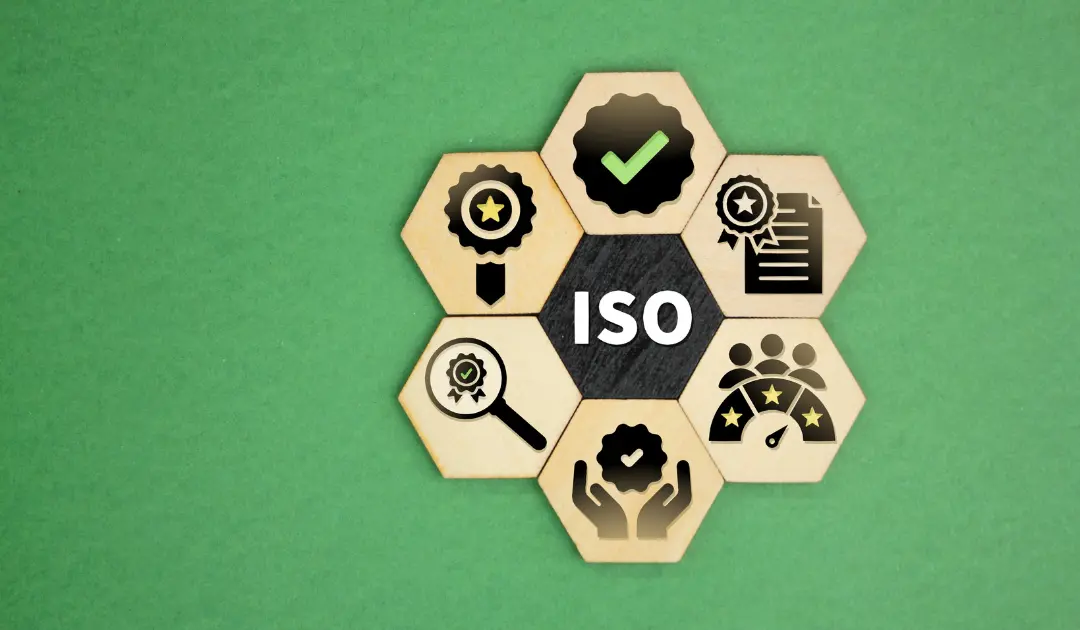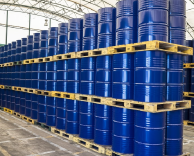Why Every Plant Manager Must Know ISO 4406
Why Every Plant Manager Must Know ISO 4406
Any plant manager's worst fear would be to see an expensive hydraulic pump grind to a standstill due to invisible grit in the oil. It is not an exaggeration to say that up to 80% of failures in hydraulic and fluid power systems are blamed on oil contamination. Small particles in oil act like sandpaper in your machinery’s bloodstream, causing wear, valve sticking, and even grave defects. Ignoring oil cleanliness is an accident waiting to transpire. That’s why every plant manager needs to know about ISO 4406, the global oil cleanliness standard that helps you check and control particle contamination before it damages your equipment.

ISO 4406 Cleanliness Code: What It Is and Why It Matters in Lubrication
The international oil cleanliness standard (ISO 4406) measures the solid particle contamination of a lubricant. In short, it’s a lubricant cleanliness code expressed as three numbers (for example, 18/16/13) that correspond to the particle counts in an oil sample. According to the ISO 4406:99 specification, these three numbers represent the count of particles larger than 4 µm, 6 µm, and 14 µm per millilitre of fluid. The higher the code number, the more particles are present in that size range and thus the dirtier the oil. For instance, a code of 22/18/13 means the oil has significantly more fine particles than a cleaner oil rated 18/16/13. Each step up in code roughly doubles the particle concentration, so lower numbers are directly proportional to cleaner oil.
In fact, this ISO cleanliness code has become the language of oil contamination control. It’s commonly included as a key metric in industrial oil analysis reports. Many equipment manufacturers (OEMs) even specify target cleanliness codes for their machinery. For example, a precision hydraulic servo might require oil cleanliness of, say, 16/14/11, while a less sensitive gearbox might allow 18/16/13. Plant managers and reliability engineers use the ISO 4406 code to set cleanliness targets and alarms for their lubricants. If your used oil sample meets the target ISO code or is cleaner than the target, you can have confidence that particle contamination is under control. Achieving and maintaining these targets isn’t always easy, but it leads to major extensions in machine life and oil service life. In other words, clean oil = long-lasting equipment.
In lubrication management, ISO 4406 matters because it provides a clear, standardised way to describe and compare oil cleanliness. It takes something obscure like particle count in oil and boils it down to a simple code that anyone from lube technicians to plant managers can understand. You can use an ISO code as an alarm limit or KPI for every system and monitor it over time. It also aids in the establishment of preventive maintenance standards. If the code starts creeping up indicating rising particle contamination, it’s a warning to improve filtration or monitor for ingression points. Contamination control becomes much more effective when you have a concrete cleanliness number to aim for. In fact, most companies today use ISO 4406 codes to define their lubricant cleanliness targets as part of their reliability programmes
Tiny Particles, Big Problems
It’s often said that contamination is the number one problem in lubrication today. Particle contamination has a disastrous effect on the health of machinery. Those microscopic dirt and metal pieces circulating in oil are like a quiet army of terrorists. They nick moving surfaces, create a snowball effect of wear, and then damaged parts release even more particles. They can clog the narrow passages in valves and actuators. Over time, this ends up in higher friction of lubricant properties, and the worst is seized components or sudden failure of critical parts. No wonder contamination is a major cause of failure in fluid power systems. Industry experts estimate that the majority of hydraulic and lubricant-related failures, upwards of 70-80%, are directly related to particle contamination.
Beyond the mechanical damage, dirty oil hits the bottom line hard. Unplanned delays, repair bills, and shortened equipment life are pricey consequences of poor oil cleanliness. According to studies, the expense of filtering, purifying, and other methods of removing contaminants is often only 10% of the price of the repairs and losses those contaminants would eventually impose. It’s like a case of an ounce of prevention being worth a pound of cure. By maintaining clean oil (defined by meeting a certain ISO 4406 cleanliness code), companies can avoid frequent breakdowns and prolong the intervals between major overhauls. In today’s competitive industrial landscape, where maximising uptime and reliability is key, oil cleanliness is king. Contaminant-free lubricants and hydraulic fluids extend the life of both components and the oil itself, thereby increasing overall equipment reliability. Overall, keeping your oil clean is one of the smartest preventive maintenance moves you can make, and it’s cheaper and far less painful than dealing with failures after the fact.
ISO 4406 vs. NAS 1638
If you’ve been around maintenance circles, you might have also heard of NAS 1638 in the context of oil cleanliness. NAS 1638 (developed by the aerospace industry) is an older cleanliness coding system. It classifies particle contamination across five size ranges from 5 to 15 µm up to >100 µm and assigns a class rating from 00 (ultra-clean) to 12 (very dirty) based on the particle counts per 100 mL of fluid. This was widely used in the past, and you’ll still find some legacy equipment manuals or industries referring to NAS classes.
However, ISO 4406 has largely become the more common standard in modern industry. Unlike NAS’s five discrete ranges, ISO 4406 uses three overlapping size thresholds, >4, >6, and >14 µm, and rates cleanliness based on particles per 1 mL of fluid. The two systems aren’t directly interchangeable, there’s no exact conversion between a NAS class and an ISO code due to the different counting methods and volume basis. In practice, if a spec or lab report uses NAS 1638, you can find published comparison charts to roughly translate it to an ISO 4406 code, but it will be an approximation. These days, most oil analysis labs and OEM cleanliness specs have transitioned to the ISO code format for consistency. The key takeaway for a plant manager is to stick to one standard for your cleanliness monitoring. ISO 4406 is recommended for new and ongoing programmes as it’s up-to-date and widely recognised, but if you do encounter NAS 1638 in your context, understand it’s just another way to express the same idea about how clean or dirty your oil is. The goal, regardless of standard, is to control particle counts to within acceptable limits for your equipment.
For More information, be a part of the Community Member - Click Here.
Contamination Control and Preventive Maintenance Best Practices
A preventative maintenance programme should include contamination management, as it is essential to preserving the health of the gear. Use these recommended practices to reach and sustain desired hydraulic fluid purity levels:
- Frequent Oil Analysis & Cleanliness Monitoring: To keep track of each system's ISO 4406 cleanliness code, make oil sample and particle count analysis a regular practice. It is possible to identify increasing contamination early and take action before it becomes a significant issue by tracking the ISO codes over time.
- Appropriate Filtration (Use the Correct Filters): To catch dangerous particles, use premium filters with the proper filtration grade. To regularly polish the oil, especially in hydraulic power units and lubrication systems, upgrade to finer filters or think about off-line filtering machines or filter carts.
- Control Contaminant Ingress: Stop dirt and moisture from entering the oil by using desiccant breathers on reservoirs, keeping storage containers sealed and clean, and fixing leaking seals. When handling lubricants, use clean transfer pumps and containers and store drums indoors or under cover.
- Educate the team and set cleanliness goals: Assist your maintenance staff in establishing suitable ISO 4406 cleaning goals for every system. For its components, OEMs frequently offer suggested cleanliness standards that might serve as a standard.
Train your staff on the value of oil cleaning and include these goals in your preventative maintenance plan.
By following these guidelines, you may establish a strong contamination management programme that maintains fluids within specifications, making it simpler and less expensive to maintain clean oil than to repair damage caused by contaminated oil later on. Businesses like Minimac Systems, which offer on-site oil analysis services, vacuum dehydrators, premium filter systems and training, may assist industry in putting these techniques into practice.
Conclusion
At the end of the day, understanding ISO 4406 is about speaking the language of contamination control. For a plant manager, the ISO 4406 code is a telling sign for your machines’ well-being. By keeping a close eye on it, you can nip potential problems in the bud. Clean oil results in fewer unscheduled stoppages, longer equipment lifespan, and more productive operations, all music to any manager’s ears. So, if you haven’t already, start paying attention to those ISO cleanliness codes on your oil analysis reports. Set some targets, improve your filtration and handling, and watch as your maintenance headaches start to fade. Following ISO 4406 isn’t just for the lubrication nerds or lab techs but for a smart business for any plant manager who wants to save money and lessen downtime. In the end, knowing ISO 4406 and insisting on clean oil is an easy win, as it keeps your machines happy and your facility running like a well-oiled machine.
Learn more about our services and industry insights by visiting our official LinkedIn page: Minimac Systems





